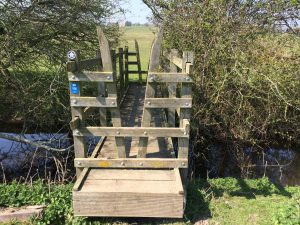Last week the prime minister, Boris Johnson, announced his ‘Gear Change’ plans to spend £2bn on walking and cycling to get Britain fitter and healthier.
The plan includes the introduction of thousands of miles of new protected bike lanes and cycle training for everyone, and bikes available on prescription will be rolled out under new plans. The plan also aims to build on the significant increase in the number of people cycling during the pandemic but, as previously covered in Rye News, some key junctions around Rye, such as the A259/Harbour Road junction, would need to be reconfigured to make cycling and walking safer.
Included within the government’s plan is a recommendation to make changes to the Highway Code to improve safety for pedestrians, particularly children, older adults and disabled people, cyclists and horse riders.
Joe Irvin, former CEO of Living Streets, the UK charity that promotes everyday walking, explains, “Underpinning these changes is a ‘hierarchy of road users’, with pedestrians at the top, making clear that those road users who can cause the greatest harm have the greatest responsibility to reduce the danger or threat they pose to others.
“The hierarchy does not of course remove the need for everyone, including people walking and cycling, to behave responsibly. Instead it clarifies that the people who are most at risk from road traffic are people walking – particularly children, older and disabled people, followed by people cycling, horse riders and motorcyclists. Those with most responsibility are those driving heavier vehicles, vans and cars.”
Cycling infrastructure needs improvement
In a separate announcement, the government is also evaluating the design of cycle lanes and cycling infrastructure around the UK ‘in order to make sure that schemes are better designed around cyclists’ needs and to make sure they can support a larger number of cyclists in the future’.
The report says, ‘These higher standards will make clear that schemes which consist mainly of paint, which make pedestrians and cyclists share the same space, or which do not make meaningful change to the status quo on the road, will not be funded.
‘These standards will be overseen by a new inspectorate, Active Travel England, which will be responsible for the cycling budget and help make sure schemes are compliant with the new standards.’
This new policy could lead to a re-evaluation of Route 2 of the National Cycle Network which runs through Rye. Route 2 is a 378 mile cycle trail that links Dover in Kent to St Austell in Cornwall via Mountbatten Bridge to the east of Rye and Ferry Road in the west.

The government’s new ‘active travel’ strategy also has implications for Rye’s potential to attract the growing number of tourists who enjoy walking and cycling holidays. Rye has some excellent walks and routes to both to the seaside and into the countryside, including close access to Rye Harbour Nature Reserve, but not all are easy to access for residents and visitors alike, particularly families or those with disabilities.
But the outstanding question is, the government may launch a plethora of national strategies to encourage more walking and cycling but, at a local level, who is bringing the various agencies together and leading on it for Rye?
Image Credits: Kevin McCarthy .



